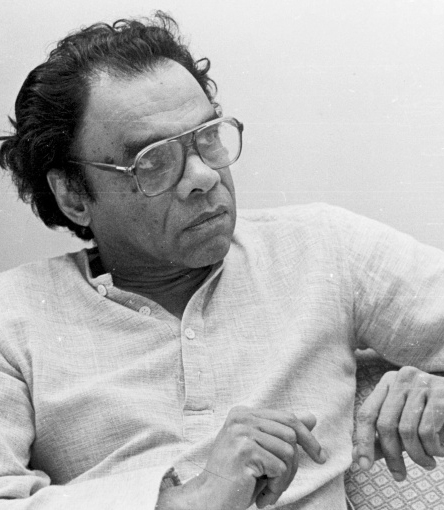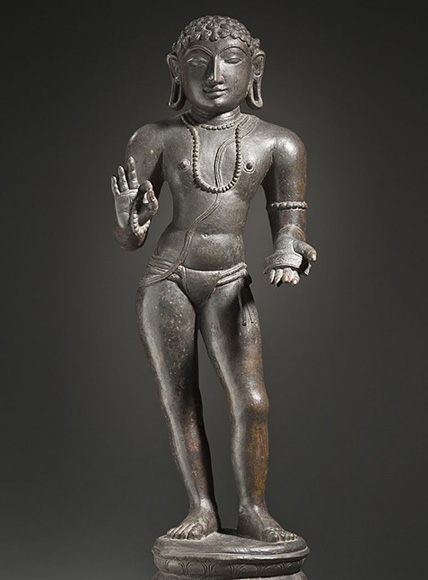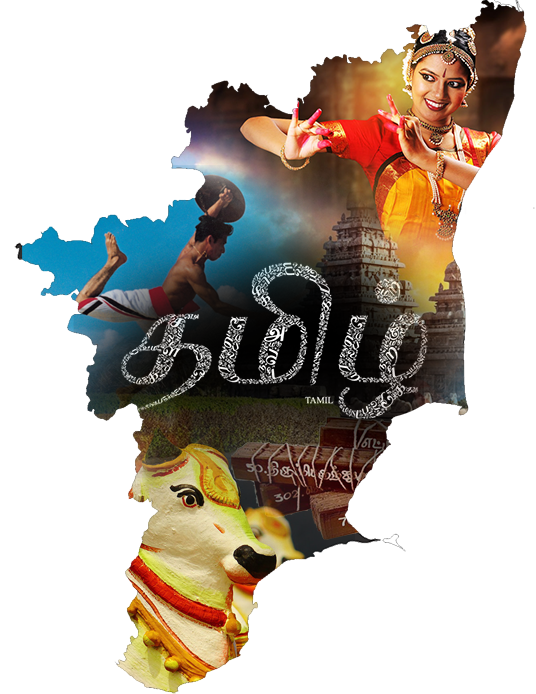Tamil language is spoken by over
70 million people.
It is one of the classical languages of the world. The greatness of Tamil lies not just in its antiquity, but also in its continuity throughout the ages.
Tamil is one of the very few languages of the world with a classical past and a robust literary tradition that has continued to this day. Despite many foreign occupations of the Tamil country and other outside influences, this noble language has always shined, producing vibrant literature for over 2 thousand years. In addition to the literature, there have been numerous grammar books, commentaries, religious works, didactic books, secular literature and works from many other genres.

Starting with a long oral tradition nurtured by bards, the Tamil language attained grandeur in its classical Sangam poetry around 300 B.C.
The language is very polished, crisp and elegant.
This bardic poetry is highly conventionalized, its conventions set by ancient scholars as stated in the Tholkappiyam, the ancient text of grammar and subject matter of literature, labeled by Kamil Zvelebil as “one of the finest monuments of human intelligence and intellect”.
Great poets, men and women of all backgrounds, wrote poems in Akam and Puram themes in 2381 poems contained in 26,250 lines in 18 books. Akam, the interior, deals with the expression of love between a man and a woman.
The Sangam literature laid the basis of the entire Tamil culture, its influences seen again and again in the later didactic works, the 5 epics, the hymns of the Saivite and Vaishnavite saints, and secular works down to modern literature. The Sangam books Thirumurukaatruppadai and Paripaadal are among the earliest bakthi poems in the Indian continent.

The post-Sangam didactic works reflect Jaina philosophies. Thiruvalluvar produced the splendid Thirukkural, of which Albert Schweitzer said,
“There hardly exists in the literature of the world a collection of maxims in which we find so much lofty wisdom”.
The lovely epics Silappatikaram, Manimekalai, Valayapathi, Kundalakesi and Seevaga Chinthamani reveal Buddhist and Jaina influences. The great epic poet Kamban, poet of poets, presented the Ramayana in delightful Tamil.
Tamil Sangam
The Alvars and Nayanmars who went from holy site to holy site, much like the bards and poets of the Sangam era who went from king to king, chose the ancient Tamil Akam conventions to express their intense love for God.
- The expressions of love between a man and woman in the Akam poems of Sangam literature gave way to passionate expressions of devotional love.
- The ‘heroine’ of Sangam became the ‘devotee’, and the ‘hero’ of Sangam became ‘God’.
- The hymns of Manikkavacakar, Andal, Nammalvar, and Thirumangai Alvar reveal well the Akam conventions. Themes from Puram poems also permeated into religious literature.
- The bravery and generosity of the kings led to the bravery and generosity of the Gods, and the elegy poems praising kings led to the saints praising Gods.
- The Sithar poems have deep wisdom and flashes of great knowledge, combined with information about medicines made from salts, metals, minerals, poisons, etc.

U.V. Swaminatha Iyer and C. W. Damodaram Pillai searched and found many valuable ancient texts and brought them to print along with the help of many devoted Tamil scholars. We have titles of 182 ancient books that have been lost. And perhaps many more that have been lost without a trace.
Countless great poets throughout the ages have devoted their lives for the growth of Tamil, producing incredibly sweet literature. Many Tamil scholars, both ancient and modern, have researched and imparted their knowledge. We owe gratitude to all of them. They often made tremendous personal sacrifices in order to serve Tamil. In modern times, Bharathiyar and Bharathidasan made a great impact on the public. Many foreign scholars in the past and present have contributed to Tamil studies.
They often made tremendous personal sacrifices in order to serve Tamil. In modern times, Bharathiyar and Bharathidasan made a great impact on the public. Many foreign scholars in the past and present have contributed to Tamil studies.
Today, we have Tamil scholars from all parts of the world and from many cultures. Tamil is taught in schools and colleges in Tamil Nadu, Singapore, Malaysia and in Sri Lanka. In the United States, Tamil is taught at University of California at Berkeley, University of Pennsylvania, University of Texas at Austin, and the University of Chicago. Harvard University has recently started to teach Tamil, at the request of its students.
However, it does not have a full time professor to teach and research, and hence the need to set up a chair. Tamil is taught in hundreds of weekend Tamil schools that operate all over the United States, Europe, Malaysia, Singapore, Mauritius, South Africa and Australia.
Tamil is one of the official languages of Tamil Nadu State (India), Malaysia, Singapore and Sri Lanka.

